Hardwood Flooring Installers Lexington KY
Fill in your details below - we'll reach out to schedule a free quote!
We will get back to you as soon as possible
Please try again later
Hardwood Flooring Installers Lexington KY
At JD Flooring, we specialize in hardwood flooring installation in Lexington KY.
Our flooring contractors have many years of experience in the industry, and our team of experts is dedicated to providing high-quality workmanship.
We use the latest techniques and equipment to ensure that your floors are installed correctly and look beautiful for years to come.
We also offer a variety of hardwood flooring options to choose from, so you can find the perfect style for your home.
Contact us today to schedule a free consultation.


Lexington KY Hardwood Flooring Installation Company
When it comes to hardwood flooring, there is no shortage of options to choose from.
JD Flooring in Lexington, KY offers a wide variety of hardwood floor installation services to meet your needs and budget.
We work with all the major brands of hardwood flooring, including Bruce, Armstrong, and Mohawk. Whether you're looking for solid hardwood or engineered hardwood, we have a floor that's perfect for your home.
Our team of experienced installers can handle any type of installation, from simple glue-down to complex site-finished projects.
So if you're in the market for new hardwood floors, be sure to give us a call!
Hardwood Flooring Installation Contractors Lexington KY
We're a team of hardwood flooring installation contractors in Lexington KY.
We've been in business for many years and have installed hardwood floors in all types of homes and businesses.
We take pride in our work and strive to provide the best possible service to our customers. We offer a variety of services, including hardwood floor installation and repair.
We also work with a wide range of hardwood floors, from solid wood to engineered wood, in a variety of colors and finishes.
If you're looking for a professional and reliable hardwood flooring contractor in Lexington KY, give us a call today!

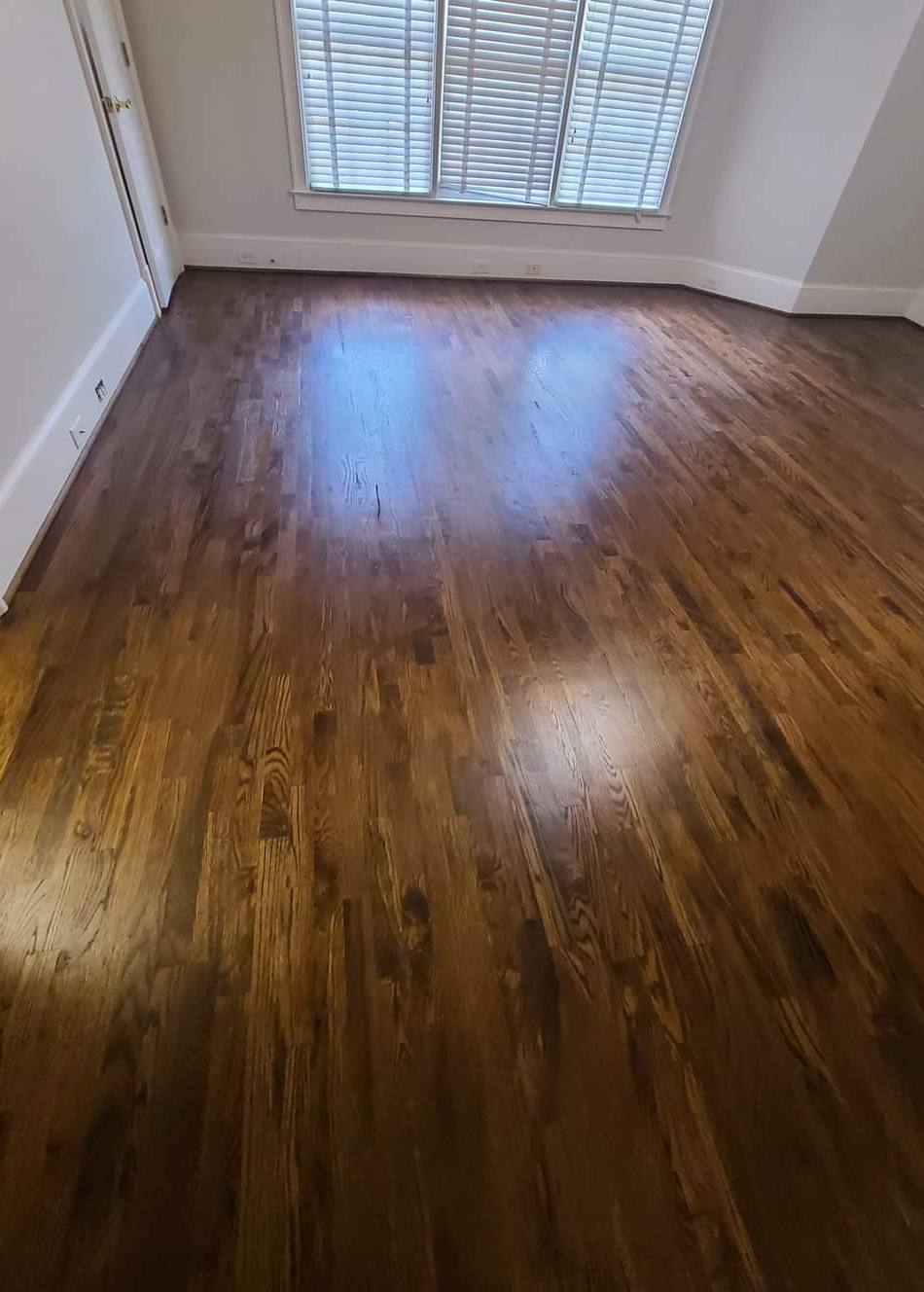
Types of Hardwood Flooring
There are three main types of hardwood flooring available on the market: solid wood, engineered wood and prefinished hardwood.
Solid wood flooring is made from a single piece of wood, and is the most traditional type of hardwood flooring. Engineered wood flooring is made from multiple layers of wood, with a layer of hardwood on top. Prefinished hardwood flooring is finished in a factory, and then installed in your home.
Each type of hardwood flooring has its own advantages and disadvantages. Solid wood floors are more durable than engineered wood floors, but can be more difficult to install.
Engineered wood floors are more stable than solid wood floors, and can be installed over radiant heating systems. Prefinished hardwood floors are the easiest to install, but may be less durable than other types of hardwood floors.
Solid Hardwood
Solid hardwood is one of the most popular choices for flooring, and it’s easy to see why. The natural beauty of wood is timeless, and it can add value to your home.
Solid hardwood is also durable and easy to care for. However, there are a few things to keep in mind before you make the switch to hardwood floors. One of the biggest drawbacks is the cost.
Solid hardwood is one of the more expensive flooring options available. Hardwood floors are also susceptible to scratches and dents, so they may not be the best choice if you have pets or small children.
Another thing to consider is that hardwood floors can be sensitive to changes in temperature and humidity, so they may not be ideal for homes in climates with extreme weather conditions. Despite its drawbacks, solid hardwood is still a popular choice for many homeowners.
If you’re considering hardwood floors for your home, be sure to weigh the pros and cons carefully before making your final decision.
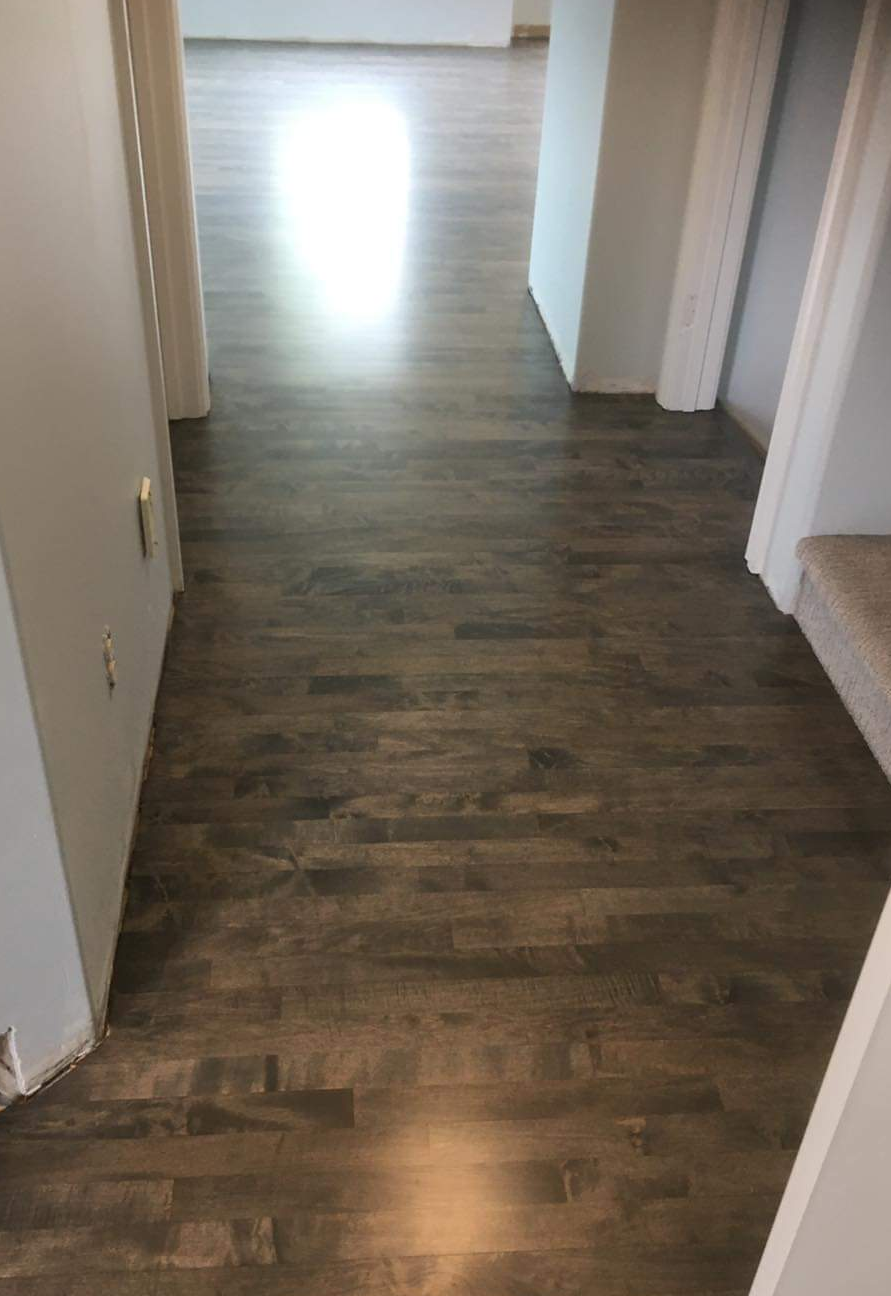
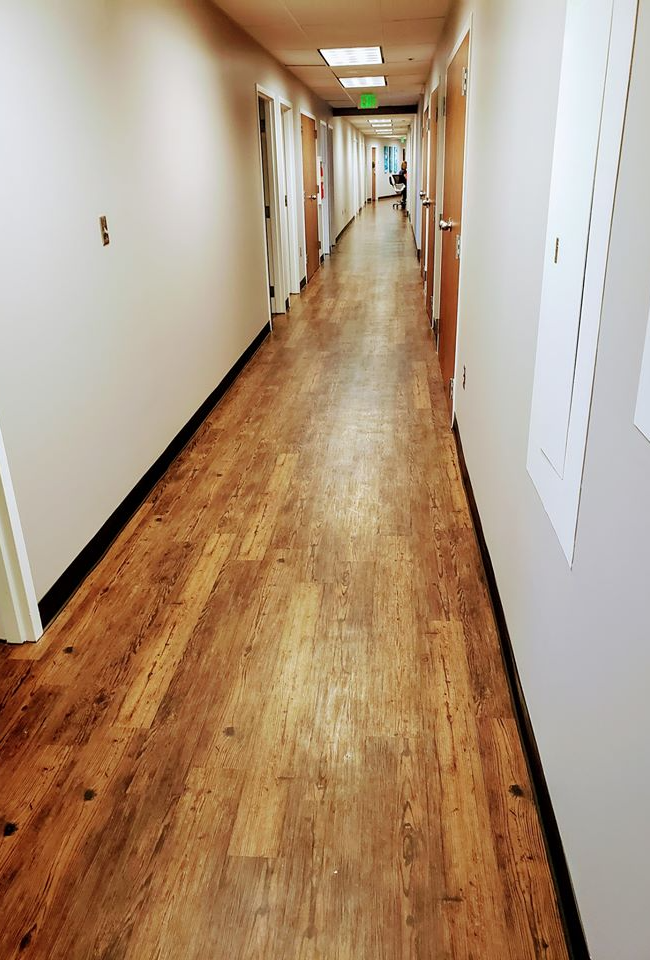
Engineered Hardwood
Engineered hardwood flooring is a popular choice for many homeowners, thanks to its durability and attractive appearance. However, there are some drawbacks to this type of flooring that should be considered before making a purchase.
One of the main advantages of engineered hardwood is that it is more resistant to moisture and temperature fluctuations than solid hardwood. This makes it an ideal choice for rooms that get a lot of exposure to sunlight or humidity, such as kitchens and bathrooms.
However, this increased stability comes at a price: engineered hardwood is more expensive than solid hardwood, and it can be difficult to repair if it becomes damaged.
In addition, engineered hardwood is not as environmentally friendly as some other options, such as bamboo or cork.
Overall, engineered hardwood is a sturdy and stylish option for flooring, but it is important to weigh the pros and cons before making a final decision.
Prefinished Hardwood
Prefinished hardwood is becoming increasingly popular due to the many benefits it offers. Perhaps the biggest advantage of prefinished hardwood is that it doesn't require any sanding or finishing once it's installed.
This can save a lot of time and money, and it also means that you won't have to deal with the dust and fumes associated with traditional finishing methods. In addition, prefinished floors are typically more durable and easier to maintain than their unfinished counterparts.
However, there are a few drawbacks to consider as well. One is that prefinished floors generally cost more than unfinished floors. Another is that they can be more difficult to repair if they become damaged.
Overall, prefinished hardwood floors are a great option for those who want the beauty and durability of hardwood without the hassle and expense of traditional finishing methods.
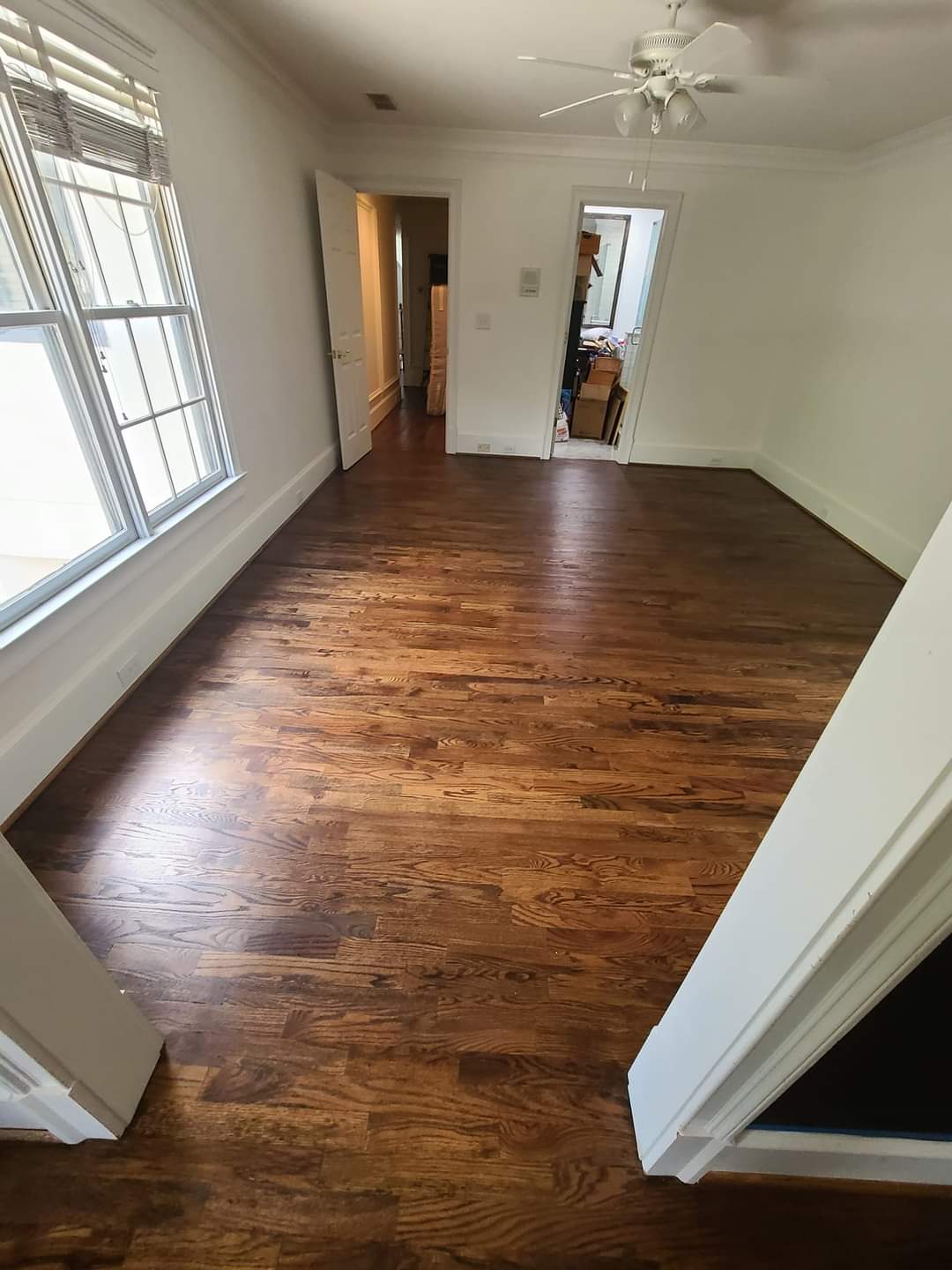
Hardwood Flooring Installation Process
Hardwood flooring installation is a process that's quite technically involved.
Our wood floor installation contractors will take time to make sure the job is done right.
Following is a bit of insight as to how our team handles wood floor installation.
Choose Your Flooring
The first step in the hardwood flooring installation process is for the customer to choose their wood flooring product.
This is a crucial starting point because the type of wood flooring you choose will have a big impact on the look and feel of your home.
Once you've decided on the type of wood flooring you want, the next step is to choose the style of flooring. There are many different styles of hardwood floors to choose from, including hand-scraped, distressed, and even bamboo.
The style you choose should complement the overall décor of your home.


Acclimate The Flooring to Your Home
The second step in the hardwood flooring installation process is to acclimate the flooring to the installation area.
This is done by allowing the wood to adjust to the temperature and humidity of the room where it will be installed.
The ideal acclimation period is typically two weeks, but this can vary depending on the type of wood and the local climate. If the wood is not properly acclimated, it can shrink or swell, causing gaps or buckling.
As a result, it is important to take care when acclimating hardwood floors to ensure a successful installation.
Prepare the Floor Installation Area
The third step in the hardwood flooring installation process is to prepare the floor installation area.
This is done by making sure the subfloor is clean, level, and free of debris.
The subfloor is the layer of material that lies under the finished flooring. In most cases, the subfloor is made of plywood or oriented strand board (OSB).
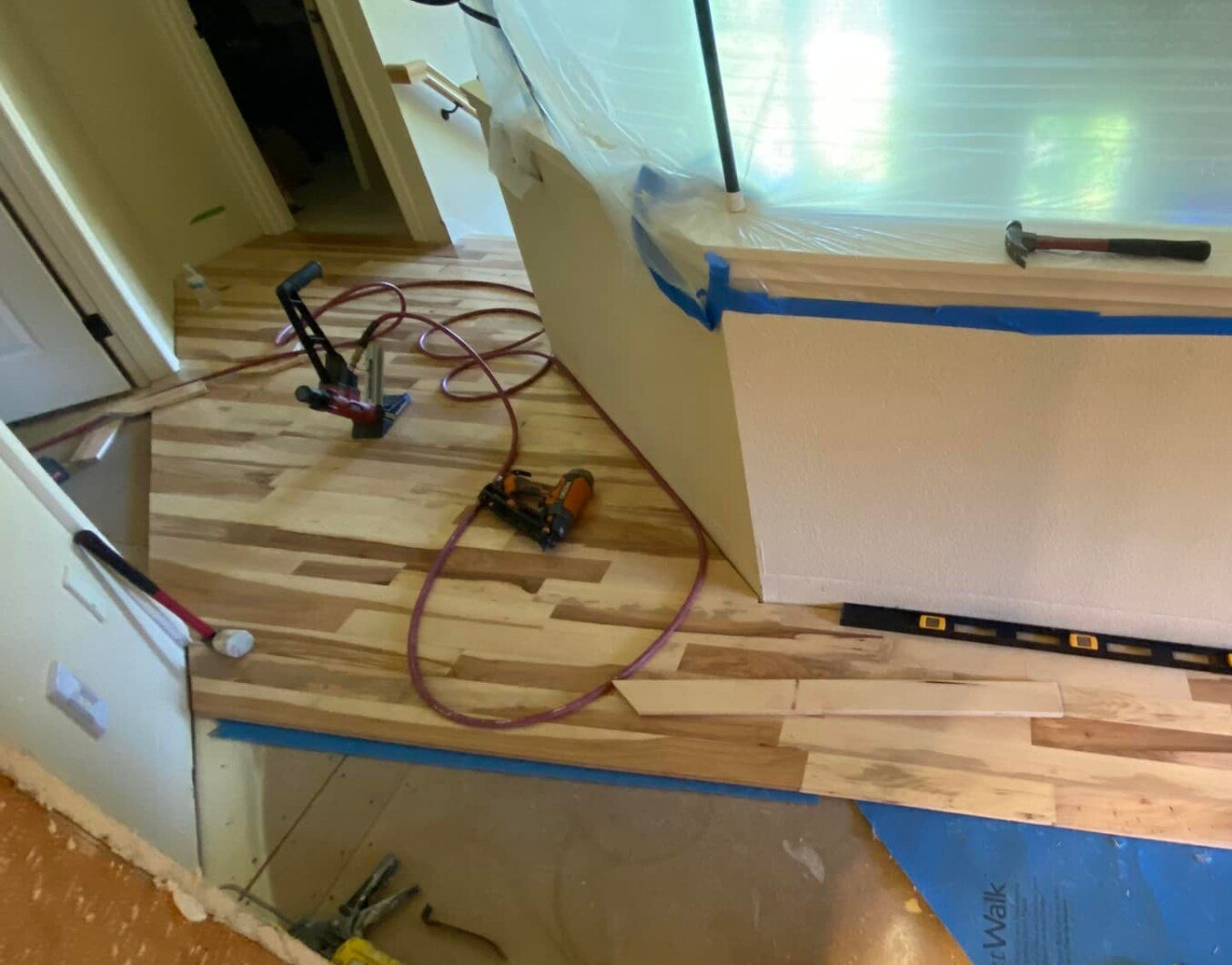

Layout the Flooring
The fourth step in the hardwood flooring installation process is to physically lay out the flooring.
We do this in order to ensure that the boards are evenly distributed and fit snugly against one another.
This is an important preparation step because it helps to avoid potential problems during the actual installation process.
Install the Underlayment
The fifth step in the hardwood flooring installation process is to install the underlayment. This is an important step because it helps to protect the floors from moisture and provides insulation against sound.
There are a variety of underlayment materials available, and the type that is best for your project will depend on the specific needs of your home.
For example, if we are installing hardwood floors in a room that is prone to moisture, we will need to use a moisture-resistant underlayment.
Once we have selected the appropriate material, the installation process is relatively straightforward. Most underlayments can be cut with a utility knife and then glued or stapled into place.
After the underlayment is installed, we will be ready to begin laying down your hardwood flooring.
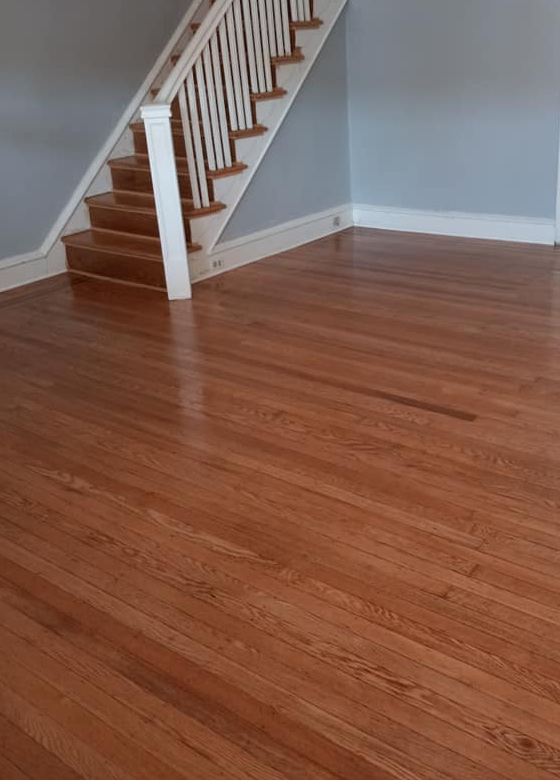
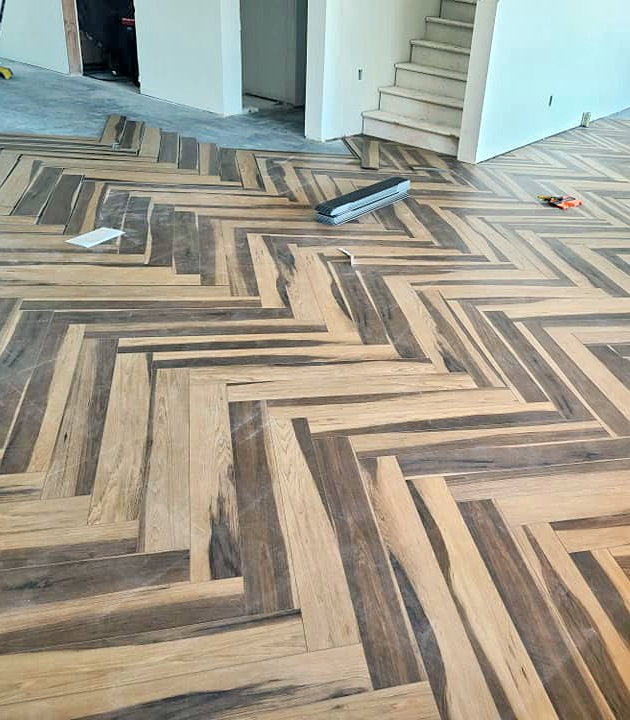
Install the Flooring
The sixth step in our hardwood flooring installation process is to install the hardwood flooring itself.
This is arguably the most important part of the entire process, as it will ultimately determine the quality and appearance of your new floor.
So, we take great care to ensure that everything is done perfectly. We use a variety of sophisticated machines to cut the boards to size and shape them to fit your space perfectly.
Finally, we carefully install them using a high-strength adhesive that will keep your flooring firmly in place for years to come.
By the time we're finished, you'll have a beautiful new hardwood floor that you can enjoy for years to come.
Finishing Touches
The final step in our hardwood flooring installation process is for us to execute any finishing touches.
For instance, sealing and sanding the floors, adding the baseboards, and applying a finish coat. These finishing touches are important in order to protect your floors and ensure their longevity.
Sealing the floors helps to prevent moisture damage, while sanding smooths out any imperfections in the wood. Adding baseboards provides a finished look and helps to protect the edges of the flooring.
Finally, the finish coat adds beauty and shine, while also providing an extra layer of protection.
By taking the time to properly install and finish your hardwood floors, you can enjoy them for many years to come.

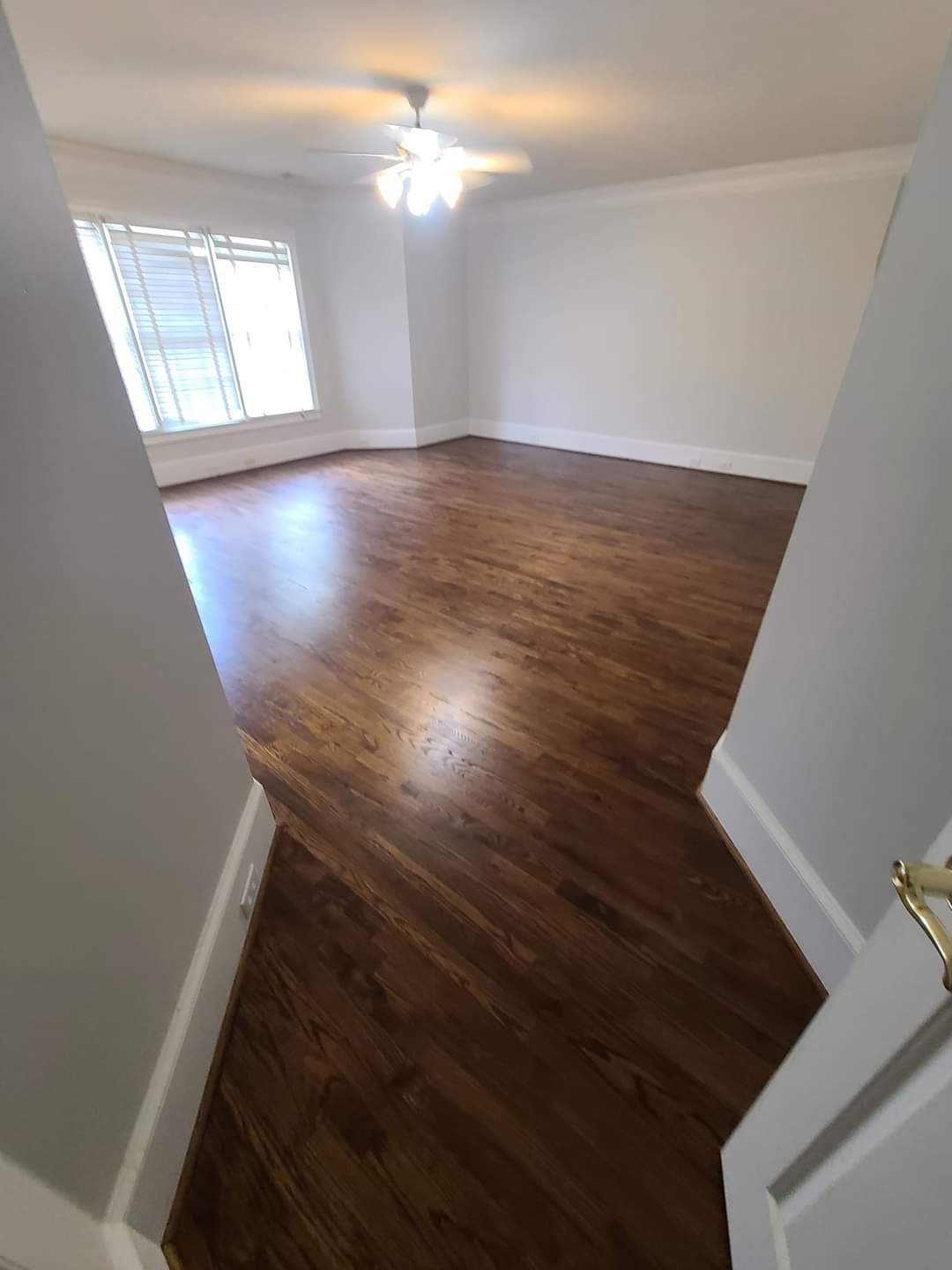
Benefits of Hardwood Flooring
Hardwood flooring is a popular choice for both homes and businesses for a number of reasons.
First, hardwood floors are durable and able to withstand heavy foot traffic.
They are also easy to clean and maintain, and they will not show wear and tear as easily as other types of flooring.
In addition, hardwood floors can help to improve indoor air quality by trapping dust and allergens.
Finally, hardwood floors can add beauty and value to your home or workplace.
With so many benefits, it's no wonder that hardwood flooring is such a popular choice!
How to Maintain Hardwood Flooring
Hardwood floors are a beautiful and durable addition to any home, but they require some special care to keep them looking their best.
Here are a few tips for maintaining your new hardwood floor:
- Sweep or vacuum regularly to remove dirt and dust.
- Place mats at all entrances to catch dirt and grit before it has a chance to get on the floor.
- Wipe up spills immediately with a damp cloth.
- Place furniture pads under all legs to prevent scratches.
- Avoid walking on the floor with shoes that can damage the finish.
By following these simple tips, you can help your hardwood floor look like new for years to come!

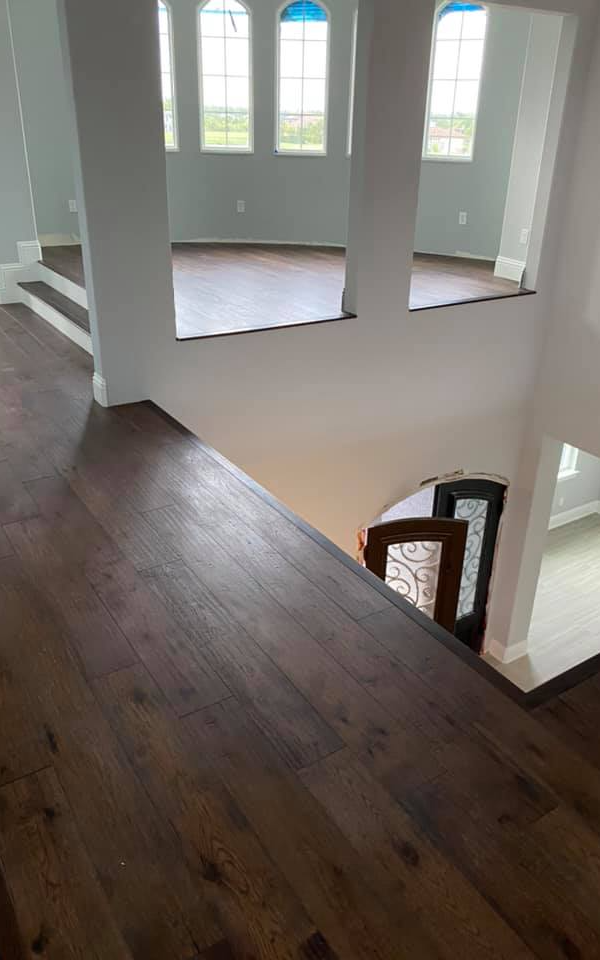
How Much Does Hardwood Flooring Installation Cost?
The cost of hardwood flooring installation can vary depending on a number of factors. The first is the type of hardwood you select.
Some woods are more expensive than others, and the price can also fluctuate based on availability. For example, exotic woods may be more expensive because they are in high demand.
The second factor is the size of your project. A larger space will require more materials and labor, and therefore, will be more costly to install.
The third factor is the condition of your subfloor. If your subfloor is in good condition, the installation process will be simpler and less expensive.However, if your subfloor needs to be repaired or replaced, this will add to the overall cost.
Finally, the location of your project can impact cost. Installation in a rural area may be less expensive than in a major city. All of these factors should be considered when budgeting for hardwood flooring installation.
Hardwood Flooring Installation FAQs
How do I choose which type of flooring to install in my home?
There are many factors to consider when choosing flooring for your home. If you live in an area with high humidity, like Lexington KY, carpet may not be the best option as it can retain moisture and lead to mold growth. Hardwood floors are a popular choice for many homeowners, but they can be scratched and stained easily.
Tile is a durable and low-maintenance option, but it can be cold and hard on your feet. Ultimately, the best type of flooring for your home depends on your lifestyle and budget. If you have active family members or pets, tile or laminate may be the best option.
If you're looking for something low-cost and easy to install, vinyl plank flooring may be the way to go. Talk to a flooring expert at a local store to get more information on the pros and cons of each type of flooring before making a decision.
How thick is hardwood flooring?
When shopping for hardwood flooring, thickness is an important consideration. The thicker the boards, the more durable they will be. However, thicker boards also tend to be more expensive.
Most hardwood flooring ranges in thickness from 3/8 to 3/4 inches. The most popular choice is 3/4-inch thick flooring, which is strong enough to withstand heavy traffic and can be sanded and refinished multiple times if needed. Thinner boards, such as 3/8-inch flooring, are less durable and cannot be sanded as many times.
However, they are often cheaper and can be a good option for rooms that do not get a lot of foot traffic. Ultimately, the best thickness for hardwood flooring depends on your budget and your needs.
How long does it take to install hardwood floors?
Hardwood floors are a popular choice for many homeowners because of their durability and classic good looks. However, installing hardwood floors can be a time-consuming and messy project. The first step is to remove the old flooring, which can be a challenging task if the floor is glued down or has been painted over.
Once the old flooring is removed, the subfloor needs to be cleaned and repaired before the new flooring can be installed. Once the subfloor is ready, the hardwood planks can be laid down and secured in place.
Finally, the edges of the floor need to be trimmed and finished. The entire process can take anywhere from a few days to several weeks, depending on the size of the room and the experience level of the installer.
What is the recommended underlayment for hardwood flooring?
When installing hardwood floors, it is important to choose the right underlayment. This material is placed between the subfloor and the hardwood boards, and it serves several purposes.
First, it provides a smooth surface for the boards to rest on. Second, it helps to reduce noise by absorbing sounds. Third, it provides additional insulation by trapping heat within the flooring system. fourth, it helps to protect against moisture damage by creating a barrier between the subfloor and the boards.
When choosing an underlayment, it is important to select a material that is compatible with the type of flooring being installed. For example, many engineered floors require a different underlayment than solid hardwood floors. Be sure to consult with a flooring professional before making your final decision.
Reach Out For a Free Quote
Send us a message using the form below, and we’ll get back to you as soon as we can.
We will get back to you as soon as possible
Please try again later
Copyright © 2015-2022 JD Flooring Installers | All rights reserved
Contractor Website by Curated Leads
